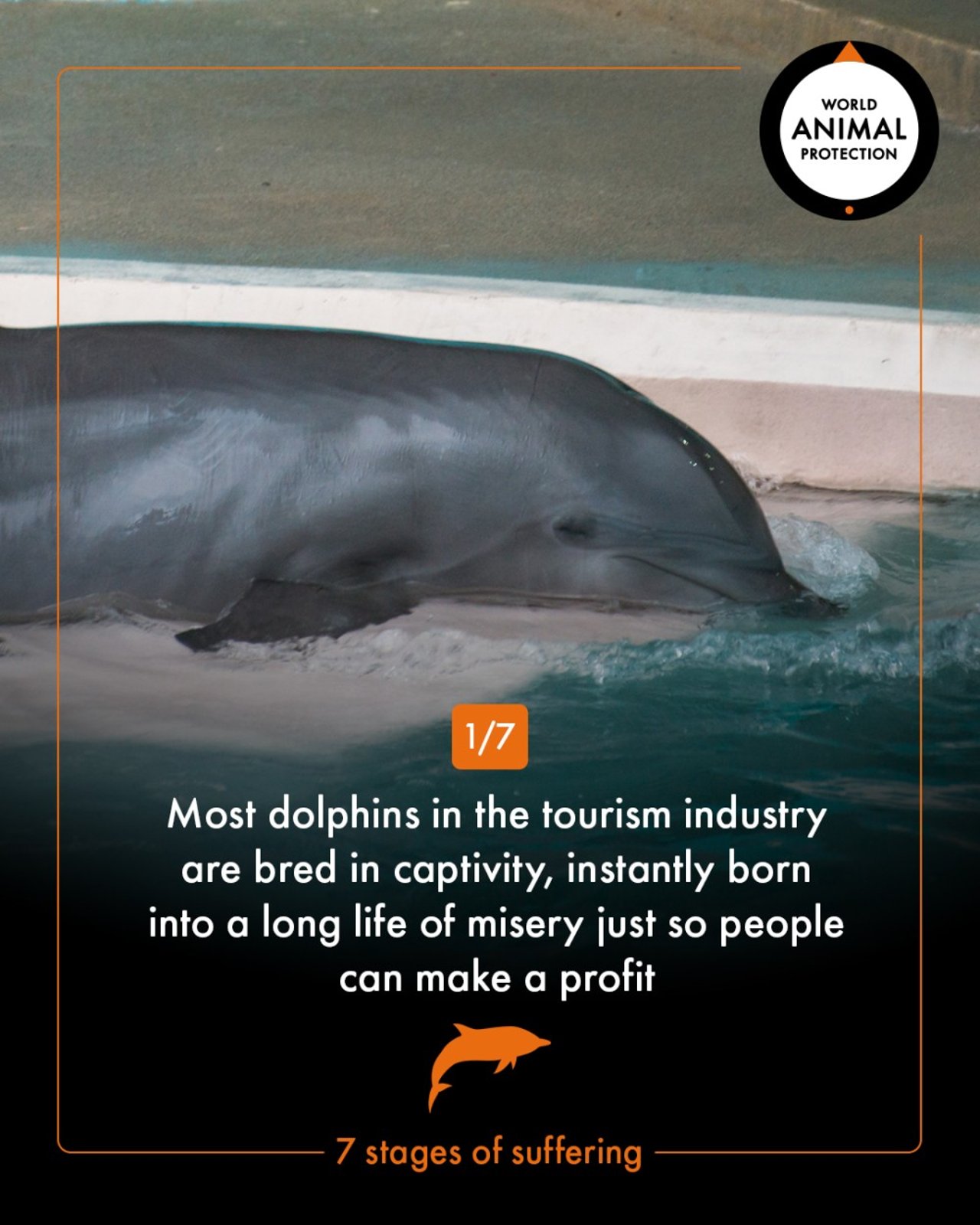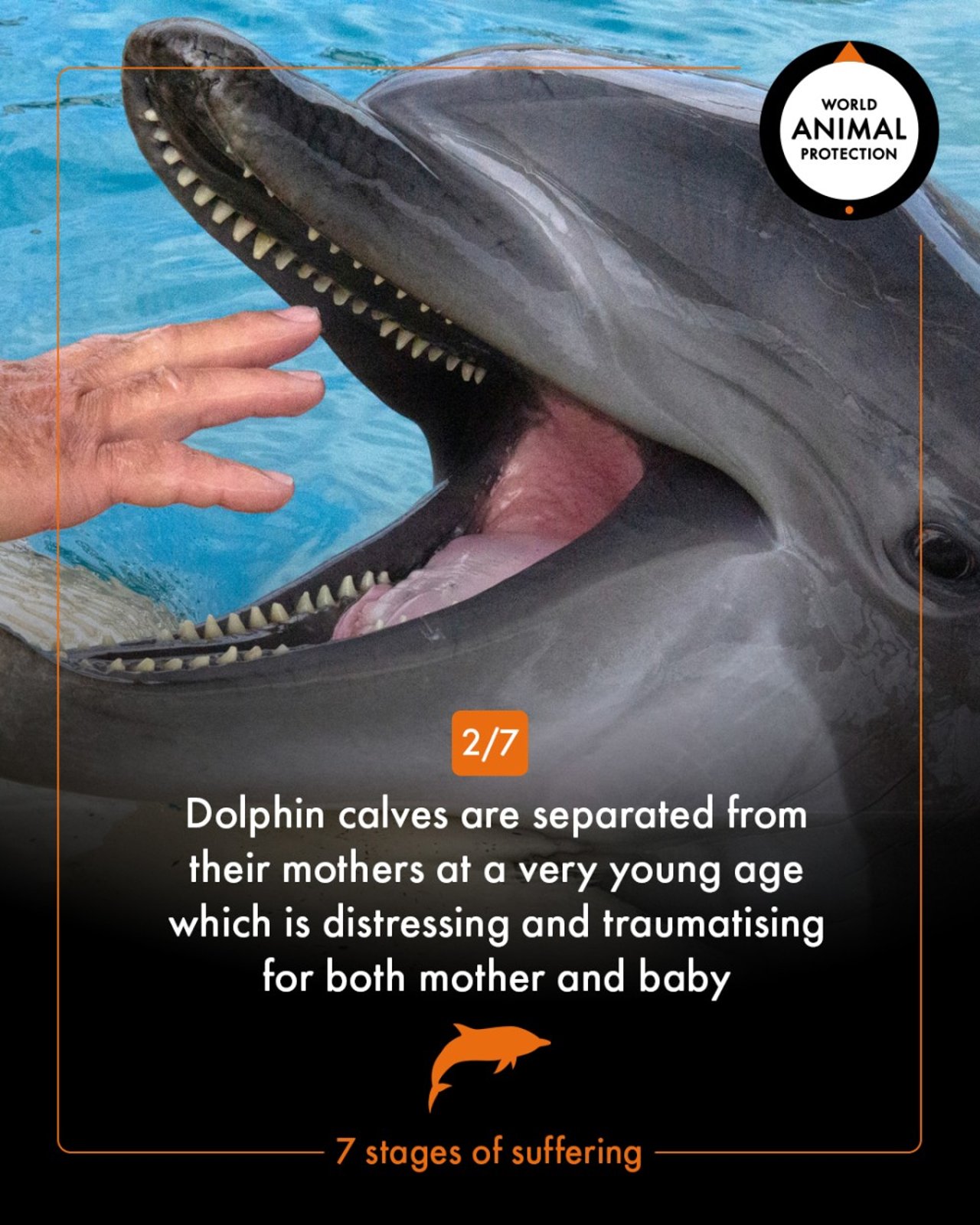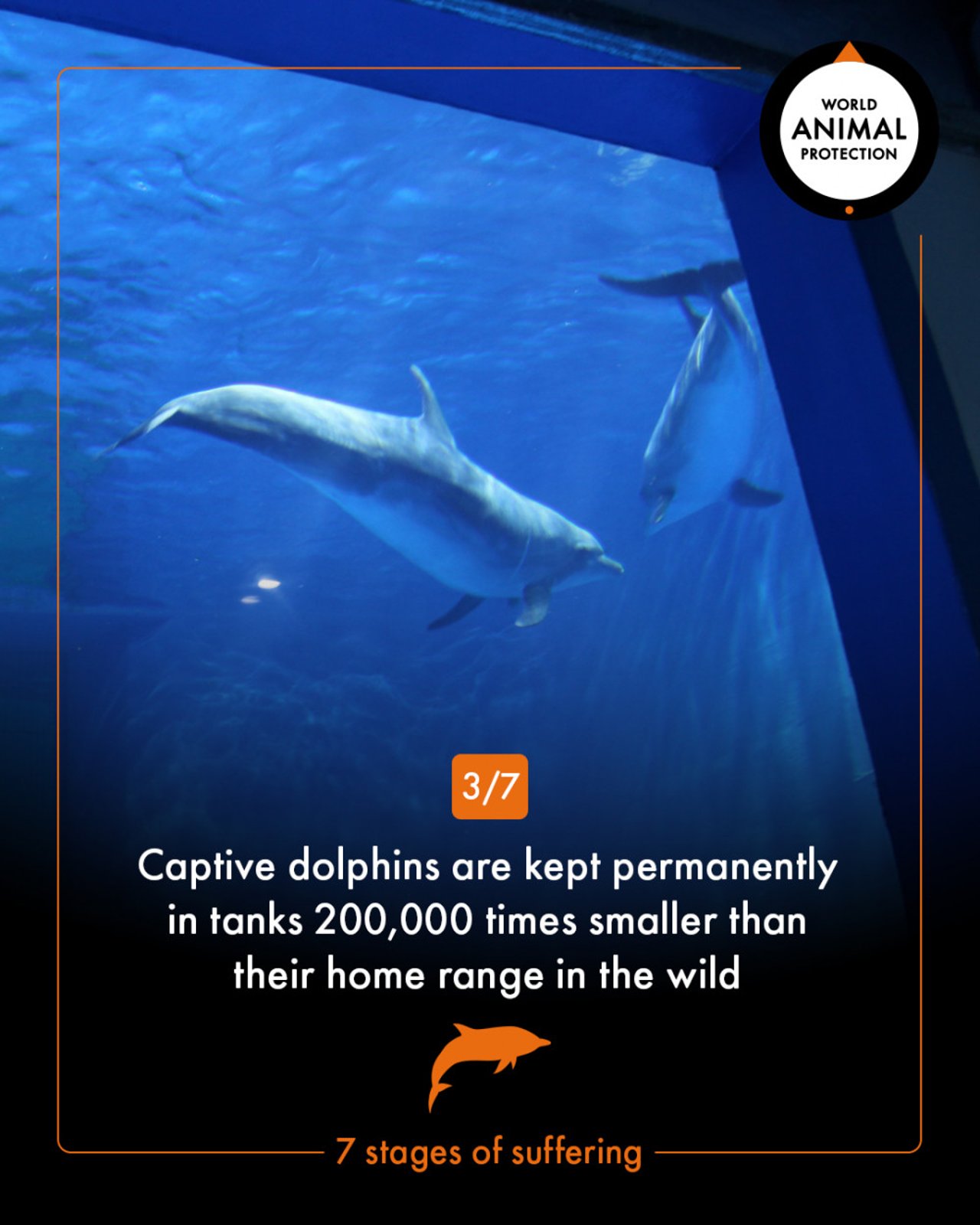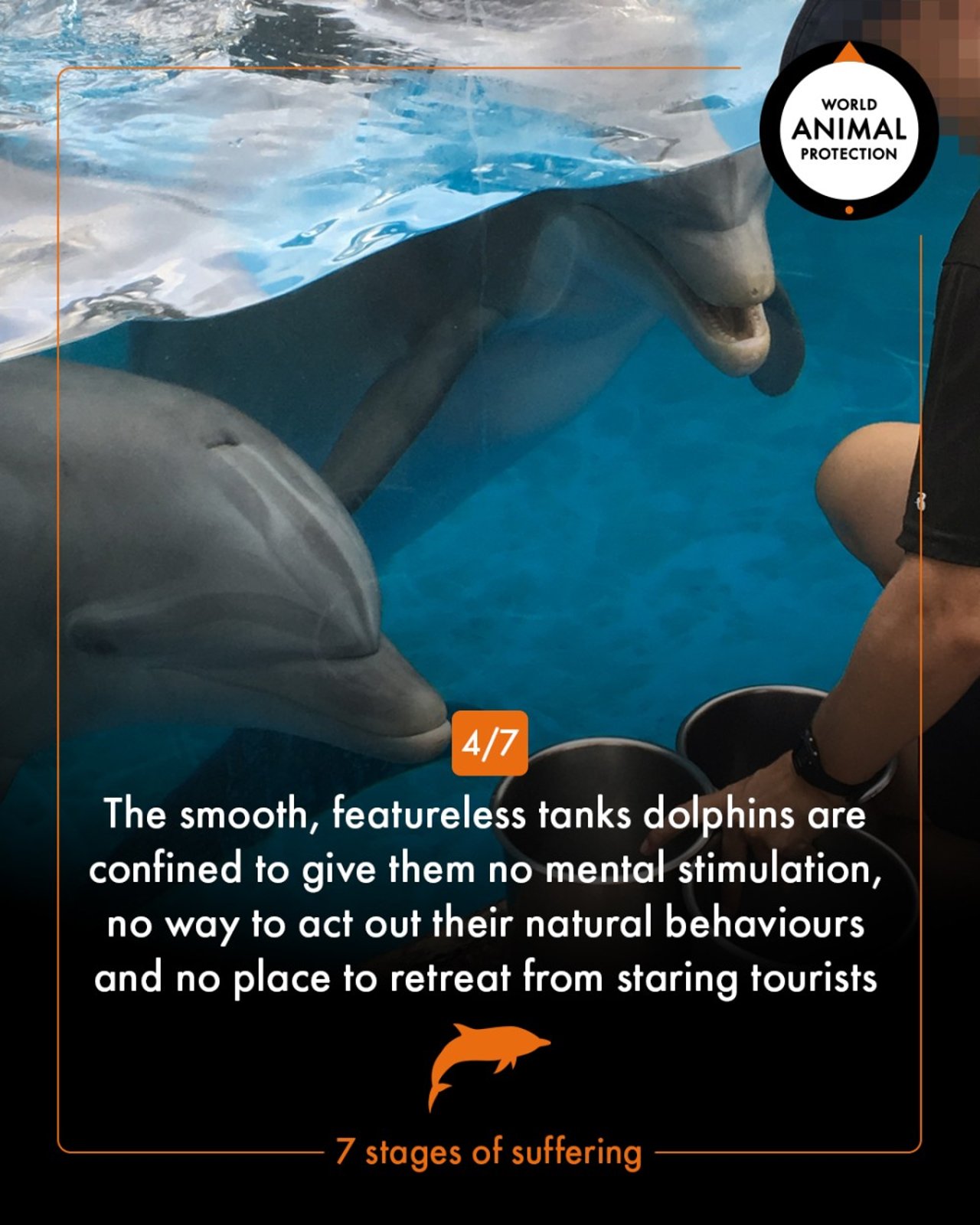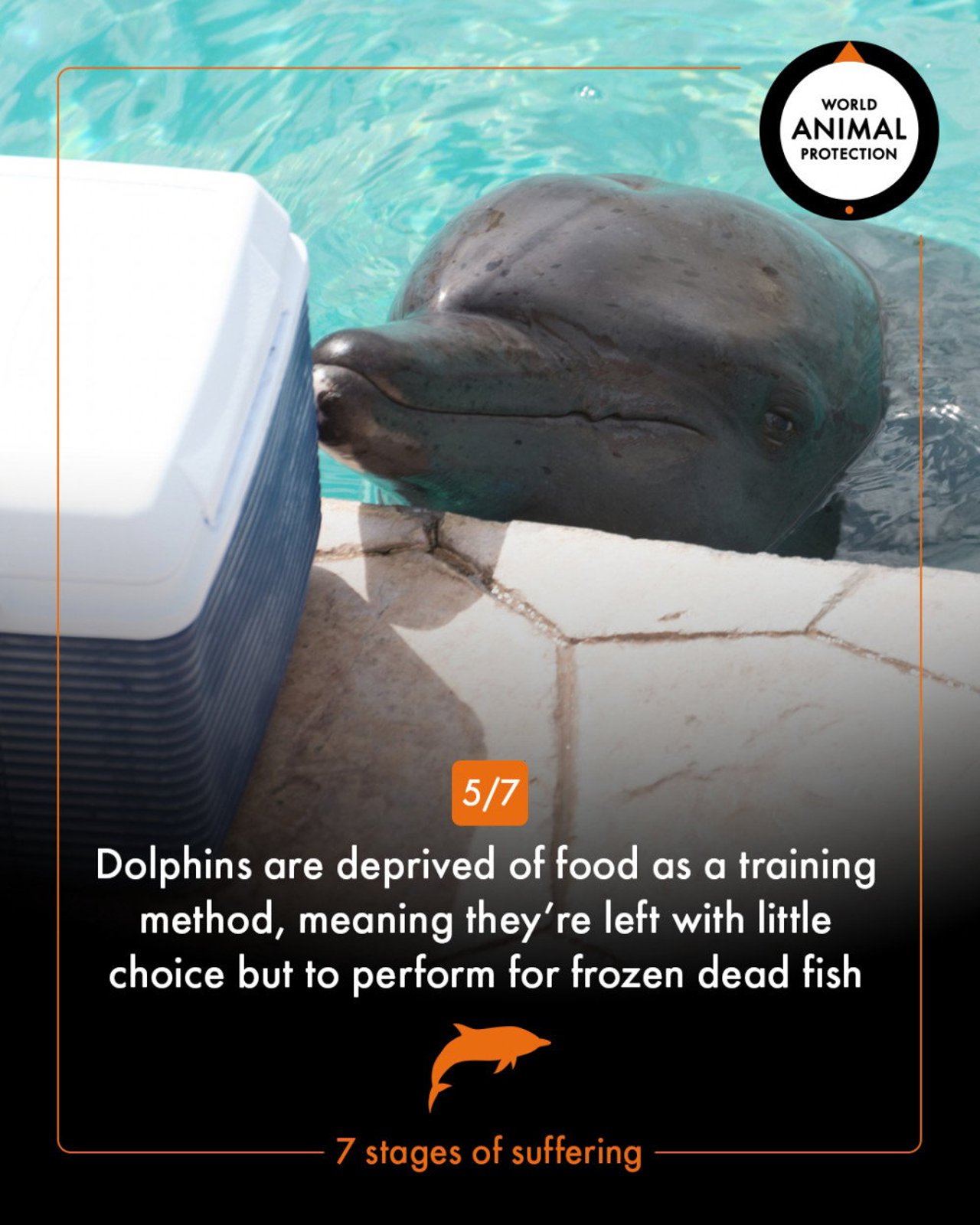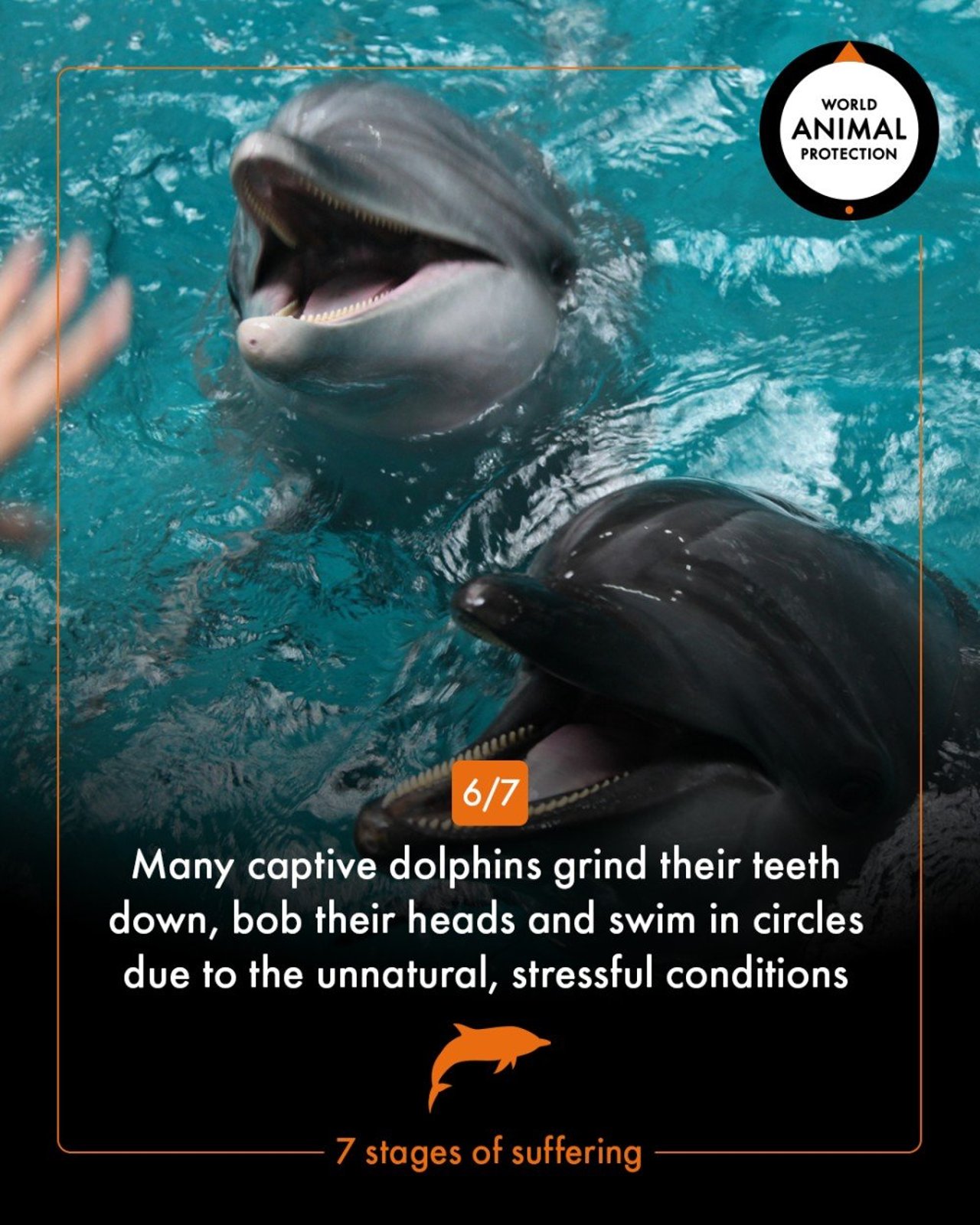
Dolphins in captivity endure seven stages of suffering in their tragic lives
News
Over 3,000 dolphins are currently trapped in cruel captive conditions at tourist entertainment venues around the world. They can live for over 50 years in a deeply miserable cycle of suffering, all to profit the multibillion-dollar dolphin tourism industry
Behind every captive dolphin’s smile is trauma. We’re looking forward to a future where we can travel again, but as tourism returns the cruelty must not.
We are calling on the tourism industry to revise their wildlife policies and stop offering exploitative experiences to their customers once and for all. Join us by avoiding activities that force dolphins and other animals to perform for entertainment.
Together we can move the tourism industry to become animal-friendly!
Stage one
Most dolphins in the tourism industry are bred in captivity, instantly born into a long life of constant misery just so the travel industry and individuals can make a profit.
Stage two
Dolphin calves are separated from their mothers at a very young age which is distressing and traumatising for both mother and baby.
Stage three
Captive dolphins are kept in permanent tanks 200,000 times smaller than their home range in the wild.
Stage four
The smooth, featureless tanks dolphins are confined in give them no mental stimulation, no way to act out their natural behaviours and no place to retreat from staring tourists.
Stage five
Dolphins are deprived of food as a training method, meaning they’re left with little choice but to perform for frozen dead fish.
Stage six
Many captive dolphins grind their teeth down, bob their heads, and swim in circles due to the unnatural, stressful captive conditions.
Stage seven
Captive dolphins can live for over 50 years, repeating a cruel cycle of frustration, stress and misery for decades until their tragic lives end.
Help us end the suffering and support a dolphin friendly future where dolphins are living wild and free as they should be.
Don’t participate in swim with dolphin activities when it’s safe to travel again, and share this post to your stories on Instagram to spread the word to your family and friends!
Further reading
Despite what some people think, dolphins don’t communicate by smiling when they are happy. The ‘smile’ on their face is simply their jaw shape.
